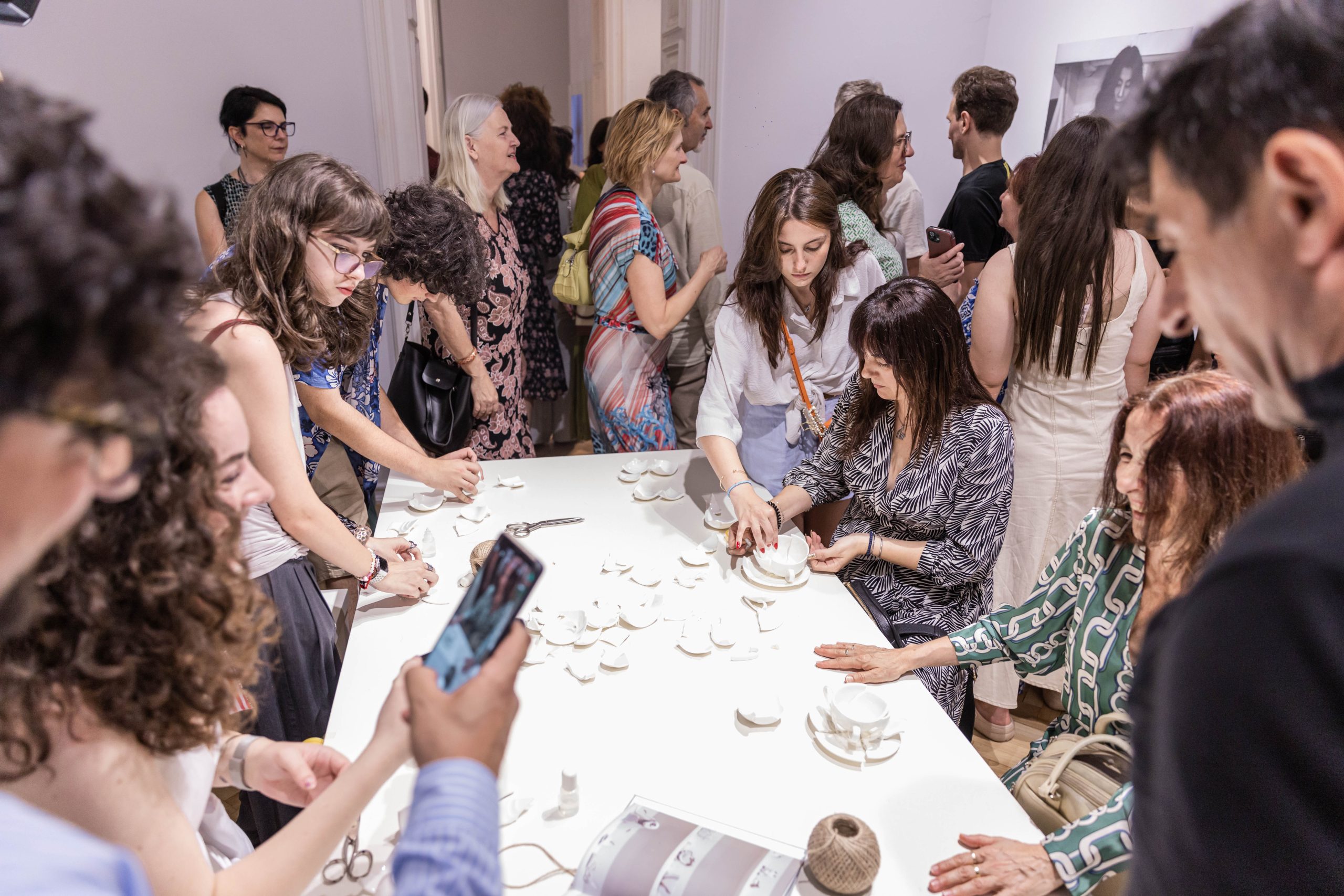
World Art in the Heart of Montenegro: Yoko Ono’s Exhibition Provokes, Connects, and Calls to Action
The exhibition Unfinished by Yoko Ono, one of the most influential artists of the 20th and 21st centuries, was officially opened last night at the Petrović Castle and the Perjanički dom, organized by the Museum of Contemporary Art of Montenegro.
The opening ceremony featured speeches by Dr. Vladislav Šćepanović, Director of the Museum of Contemporary Art of Montenegro; renowned international curator Gunnar B. Kvaran; the exhibition’s curator Maša Vlaović; and Montenegro’s Minister of Culture and Media, Dr. Tamara Vujović, who officially opened the exhibition.
“This exhibition proves that our museum is an institution that, with all its resources, knowledge, and capacities, proudly stands shoulder to shoulder with global centers of contemporary art. I am proud of the entire Museum team – their expertise, dedication, committed work, and contribution to every segment of our operations,” emphasized Šćepanović.
Gunnar B. Kvaran thanked the Museum for its trust and successful collaboration, emphasizing that Yoko Ono is an avant-garde artist who revolutionized contemporary art, especially through the practice of actively involving the audience.
“She broke down the boundaries between creation and observation. Her work is engaged, based on instructions that the viewer is invited to interpret and carry out. The audience is called upon to actively participate in the artwork. This is one of the most radical steps forward in contemporary art of the 20th and 21st centuries.”
Art That Doesn’t Offer Answers – It Demands Your Reaction
Curator Maša Vlaović pointed out that Unfinished is not just the title of the exhibition but also the key to understanding it – both as a work of art and as a social message.
“It’s hard to imagine today just how revolutionary Yoko Ono’s work was at the time it emerged. Although her works remain relevant, it’s important to understand that the core of her practice lies in powerful ideas that do not age. Speaking of Yoko Ono means speaking of a potent symbol – not just of art, but also of freedom, peace, resistance, and a call to personal action. Her name carries many associations, but what essentially defines her is her ability to connect art and society – not just on a formal level, but on a deeply conceptual one. Most of her works focus on the psychology of revelation, introspection, and the pursuit of personal freedom. Through provocative, often participatory forms, Yoko Ono invites us to be active participants – not only in her art, but in our own lives and the society we live in.”
Reflecting on Yoko Ono’s work, Vlaović noted that the artist continually reminds us of the individual’s potential – to act, to change, and to question.
“Unfinished is a call to responsibility – to ourselves, to others, and to the society we are building. It raises questions of freedom, empathy, and our willingness to be part of a process, to not wait for ‘complete and finished forms,’ but to act now, even when everything is imperfect and in progress. In the context of Montenegro, where many processes – social, political, cultural – are still ‘in the making,’ her message feels almost personal. Unfinished asks: What are you ready to do? And it offers no ready-made answers – instead, it invites us to search for them together,” Vlaović concluded.
Minister of Culture and Media, Dr. Tamara Vujović, emphasized that Unfinished does not arrive as a finished form, but as an invitation to dialogue.
“The Museum of Contemporary Art of Montenegro is not just a site of exhibition tonight, but an epistemological framework in which meaning, social relations, and collective memory are explored. This institution takes a different path – it creates conditions for thought. It does not impose a narrative, but calls for conversation. It does not close itself within the hermetic realm of the artistic elite, but points to openness – toward the community, both local and international.”
The exhibition Unfinished will remain open until September 01. Through a variety of forms – from conceptual installations, textual works, and videos, to interactive calls to action – visitors will have the opportunity to explore the work of an artist who has spent decades dissolving the boundaries between art and life.
